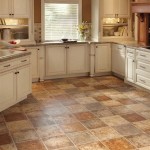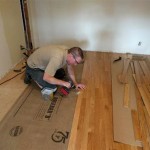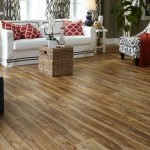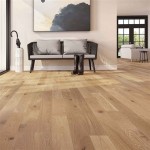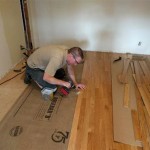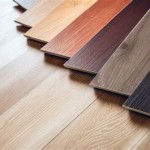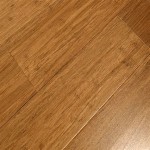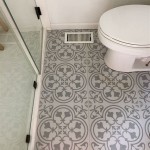Is Vinyl Flooring Suitable For Stairs?
Vinyl flooring has become a popular choice for homes and businesses due to its versatility, durability, and cost-effectiveness. One area where the suitability of vinyl flooring is often questioned is in its application for stairs. While vinyl can be a viable option for staircases, it's crucial to understand the different types of vinyl, their properties, and the specific considerations required for a successful installation. This article explores the characteristics of vinyl flooring, examines its advantages and disadvantages when used on stairs, and provides guidance on installation and maintenance to help determine if vinyl is the right choice for your staircase.
Vinyl flooring broadly encompasses several categories, each with its own set of attributes that impact its suitability for different applications. The most common types include sheet vinyl, vinyl tiles, and luxury vinyl plank (LVP) or luxury vinyl tile (LVT). Each type offers varying degrees of durability, water resistance, and aesthetic appeal. Understanding these differences is paramount when considering vinyl flooring for stairs.
Sheet vinyl is sold in large rolls and is typically installed as a single, seamless surface. This minimizes the number of seams, making it highly water-resistant. However, its large size can make it difficult to maneuver and install on stairs, especially for DIY projects. Vinyl tiles, on the other hand, are smaller squares that are glued down to the subfloor. They offer more design flexibility but can be more susceptible to water damage if not properly sealed at the seams. LVP and LVT are designed to mimic the look of hardwood or stone, respectively. They come in planks or tiles that interlock or are glued down. LVP and LVT are generally thicker and more durable than sheet vinyl or traditional vinyl tiles, making them a popular choice for high-traffic areas, including stairs.
The choice of vinyl flooring for stairs should be heavily influenced by the anticipated traffic volume and the potential for wear and tear. Stairs are inherently high-traffic areas, and the flooring material must be able to withstand constant foot traffic, potential impacts, and abrasion. Thicker vinyl options, such as LVP or LVT with a robust wear layer, are generally preferred for stairs because they are designed to resist scratches, dents, and fading. The wear layer, typically measured in mils (thousandths of an inch), is a critical factor in determining the durability of the vinyl. A thicker wear layer will provide better protection against daily wear and tear.
Beyond the wear layer, the overall construction of the vinyl plank or tile contributes to its suitability for stairs. A multi-layered construction, often including a core layer for stability, a print layer for aesthetics, and a top wear layer for protection, provides enhanced durability and resistance to deformation under pressure. Some vinyl products also include a backing layer for added comfort and sound insulation.
Advantages of Using Vinyl Flooring on Stairs
There are several compelling reasons to consider vinyl flooring for staircases. These advantages can make it an attractive alternative to traditional materials like carpet, hardwood, or tile.
One significant advantage is the cost-effectiveness of vinyl flooring. Compared to hardwood or tile, vinyl is generally more affordable, both in terms of material costs and installation expenses. This can be a major consideration for homeowners on a budget who are looking for a durable and attractive flooring option for their stairs.
Another key benefit is the ease of maintenance. Vinyl flooring is highly resistant to water, stains, and scratches, making it easy to clean and maintain. Regular sweeping and occasional mopping are usually sufficient to keep vinyl stairs looking their best. Unlike carpet, vinyl does not absorb spills or odors, and it is less susceptible to staining from food, beverages, or pet accidents. This makes it a particularly good choice for households with children or pets.
The wide variety of styles and designs available in vinyl flooring is another attractive feature. Vinyl can mimic the look of hardwood, stone, tile, and other materials, providing a wide range of aesthetic options to complement any interior design. This versatility allows homeowners to achieve the desired look without the high cost or maintenance requirements of natural materials. Furthermore, vinyl flooring can be customized with decorative borders or inlays to create a unique and personalized staircase design.
Finally, vinyl flooring offers a degree of comfort underfoot. While it may not be as soft as carpet, it is generally more comfortable than hardwood or tile. Some vinyl products also include a cushioned backing layer that provides added comfort and reduces noise transmission, making it a more pleasant surface to walk on, particularly on stairs.
Disadvantages of Using Vinyl Flooring on Stairs
While vinyl flooring offers numerous advantages, there are also some potential drawbacks to consider before making a decision. Understanding these disadvantages can help homeowners make an informed choice and avoid potential problems down the line.
One of the main concerns is the potential for damage from sharp objects or heavy impacts. While vinyl is generally durable, it can be scratched or dented by sharp objects, such as furniture legs or dropped items. Additionally, heavy impacts can potentially damage the underlying structure of the vinyl plank or tile. This is especially important to consider on stairs, where the risk of impacts and abrasion is higher than in other areas of the home.
Another potential disadvantage is the possibility of fading or discoloration over time, especially in areas exposed to direct sunlight. Prolonged exposure to UV rays can cause some vinyl products to fade or discolor, which can detract from their appearance. To mitigate this risk, it is advisable to choose vinyl flooring with UV protection and to use window treatments to reduce the amount of direct sunlight that reaches the stairs.
The installation of vinyl flooring on stairs can also be more challenging than installing it on a flat surface. Stairs require precise measurements and cuts to ensure a proper fit, and the installation process can be time-consuming and labor-intensive. While some homeowners may be able to handle the installation themselves, it is often recommended to hire a professional installer to ensure a high-quality and durable result. Improper installation can lead to loose or uneven flooring, which can be both unsightly and unsafe.
Furthermore, the resale value of a home may be impacted by the choice of vinyl flooring on stairs. While vinyl is a popular and practical option, some homebuyers may prefer more traditional materials like hardwood or carpet. This is a subjective factor, and the impact on resale value will vary depending on the local market and the preferences of potential buyers.
Installation Considerations for Vinyl Flooring on Stairs
The installation process is a critical factor in the success of vinyl flooring on stairs. Proper preparation, precise measurements, and careful installation techniques are essential to ensure a durable and aesthetically pleasing result.
The first step is to thoroughly prepare the subfloor. The subfloor must be clean, dry, and level. Any imperfections, such as cracks or unevenness, must be repaired before installing the vinyl flooring. This may involve patching holes, sanding down high spots, or applying a self-leveling compound. A smooth and even subfloor is essential to prevent the vinyl from flexing or cracking under pressure.
Accurate measurements are crucial for a successful installation. Each step and riser must be measured individually, and the vinyl flooring must be cut to the precise dimensions. It is advisable to create templates for each step to ensure a consistent and accurate fit. When cutting the vinyl, it is important to use a sharp utility knife and a straight edge to create clean and precise cuts. Overlapping or gapping seams can detract from the appearance of the stairs and create potential tripping hazards.
The method of attachment will depend on the type of vinyl flooring being used. Sheet vinyl is typically glued down to the subfloor using a suitable adhesive. Vinyl tiles and LVP/LVT can be either glued down or installed as a floating floor. A floating floor installation involves interlocking the planks or tiles together without gluing them to the subfloor. This method can be faster and easier than gluing, but it is important to use a high-quality underlayment to provide cushioning and sound insulation. When gluing down vinyl flooring, it is crucial to use the correct type of adhesive and to apply it evenly to the subfloor. Follow the manufacturer's instructions carefully to ensure a strong and durable bond.
Furthermore, stair treads and risers are often installed to provide a finished look and added safety. Stair treads are the horizontal part of the step, while risers are the vertical part. Vinyl stair treads and risers are available in various styles and colors to match the vinyl flooring. They can be installed using adhesive or screws. When installing stair treads and risers, it is important to ensure that they are securely attached to the stairs and that they do not create any tripping hazards.
Finally, proper ventilation is essential during installation. Many adhesives and sealants contain volatile organic compounds (VOCs), which can be harmful if inhaled. Open windows and doors to provide adequate ventilation and wear a respirator if necessary.

How To Install Vinyl Plank Flooring On Stairs In 6 Steps

Pros And Cons Of Installing Vinyl Flooring On Stairs Lx Hausys

Pros And Cons Of Installing Vinyl Flooring On Stairs Lx Hausys

Is Vinyl Flooring Good For Stairs Luxury Floorbay

Luxury Vinyl Tile Seamless Upstairs And Downstairs Solution

Vinyl Plank Carpet Or Hardwood Stairs Which Is Best

Pros And Cons Of Installing Vinyl Flooring On Stairs

Luxury Vinyl Tile Seamless Upstairs And Downstairs Solution

How To Install Luxury Vinyl Plank Laminate Flooring On Stairs

How To Install Luxury Vinyl Plank Flooring On Stairs A Simply Curated Home
See Also
